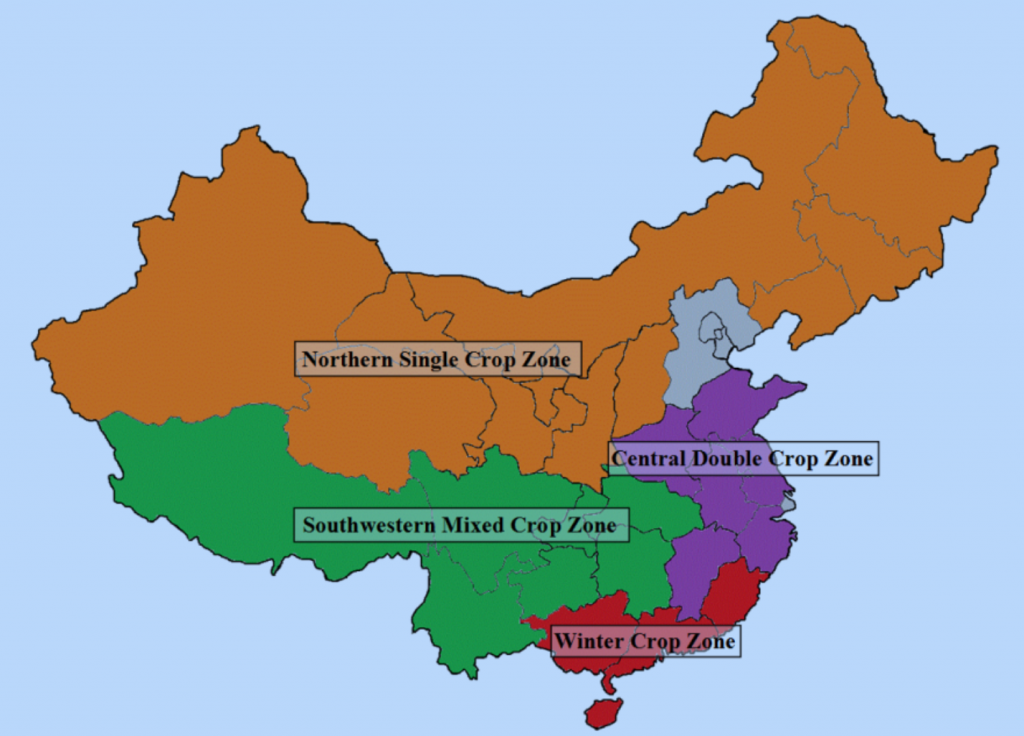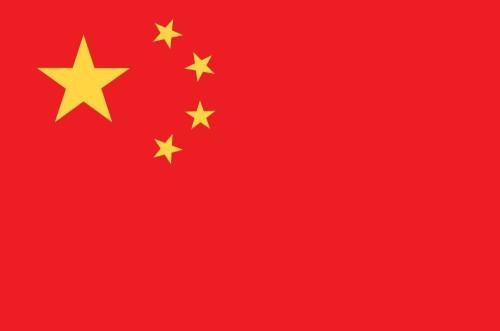Abraham Inouye of the United States Department (USDA) has issued a new report on the potato market in the Peoples Republic of China (PRC) through the Global Agricultural Information Network. Details, recently approved by Lashonda McLeod for general distribution, are highlighted below.
In marketing year 2019/20 (September to August), potato farmers in China are expected to reap a bumper harvest, with fresh potato production increasing by 5% year on year to 98 million metric tons. Favorable weather in key growing regions will boost processed potato production, particularly to supply the fast-growing frozen french fries sector. China’s additional tariffs on US-sourced processed potato products will result in decreased imports of frozen french fries. While the United States does not have market access to ship fresh table stock potatoes, it is one of only a few countries eligible to export seed potatoes to the PRC, although commercial shipments have been limited.
Executive Summary
In marketing year (MY) 2019/20 (September to August), fresh potato production is forecast to increase 5 percent, to 98 million metric tons (MMT). This increase is due to favorable weather in China’s major potato growing areas of Inner Mongolia, Gansu, and Ningxia, where yields were reportedly 15-20 percent higher than average. Forty percent of the potato harvest in China is consumed through processing, and frozen french fry (FFF) production is forecast to increase 10 percent in MY2019/20 due to the increased supply of raw material. Currently, China does not import table stock potatoes due to phytosanitary restrictions. The United States does export a small amount of seed potatoes from the state of Alaska. China’s imports of FFF is expected to decrease this year by 10 percent due to the additional tariffs it has placed on the United States, its largest supplier of imported FFF.

Potato Growing Zones
There are four major potato growing regions in mainland China, as shown in the above map. The Northern Single Crop Zone accounts for 50 percent of the nation’s total potato area. The spuds produced there are mainly used for seed potatoes, direct consumption and processing. Potatoes in this area are usually planted in late April to early May and harvested from September through October. This zone includes Heilongjiang, Jilin, Liaoning, Inner Mongolia, Gansu, Xinjiang, Qinghai, Ningxia, Shanxi and Shaanxi provinces.
The Southwestern Mixed Crop Zone of Sichuan, Guizhou, Yunnan, Tibet, Chongqing and part of Hunan and Hubei provinces accounts for 35 percent of China’s total potato acreage. Tubers produced in this region are primarily used for direct consumption. Potatoes in this zone are planted in September through November, harvested from February through April and are primarily distributed in the direct consumption market.
The Central Double Crop Zone accounts for 10 percent of total acreage. Spring potatoes are planted in February through March and harvested during May or June. Autumn potatoes are planted in July through August and pulled from the ground in October and November. Tubers produced in this area are mainly for export and direct consumption. This zone includes Jiangxi, Jiangsu, Zhejiang, Anhui, Shandong and Henan provinces.
The Winter Crop Zone is home to 5 percent of total acreage. Bound mainly for export and direct consumption, potatoes produced in this area are planted from October through November and harvested in February and March. This zone includes Guangdong, Fujian, Guangxi, and Hainan provinces.
Inner Mongolia, Gansu, Sichuan, Guizhou and Yunnan are the largest potato producing provinces, accounting for nearly 60 percent of total fresh potato production.

Challenges Despite Good Harvest Year
China’s potato industry faces significant challenges. Production and planted area has declined for years. Despite the potato’s status as one of the five nationally recognized “staple grains,” farmers of this crop receive considerably lower support subsidies than those cultivating other staple crops such as soybeans, corn, wheat, and rice). Additionally, potatoes are mostly grown in hilly areas where it is difficult to employ mechanized production tools. As a result, harvesting is labor intensive. With an increasing shortage of farm labor due to urbanization, rising costs are a significant challenge for the industry. Industry sources reported that labor accounted for about 50 percent of production costs in 2018; that number has doubled since 2010. Also, unlike other staple grains, potatoes do not store well, making it difficult to balance supply and demand with seasonality, putting additional financial stress on potato farmers.
Another major challenge has been the slow development of potato varieties suited to China’s growing conditions. Many popular potato varieties have been planted in China for a long time. For example, the Atlantic variety was introduced in 1978; Favorita was introduced in 1981, followed by Shepody in 1987.
The “Better Potato Plan” was launched in the PRC during 2018 to improve potato breeding through modern genomics and synthetic biology. If successful and commercialized, the new varieties will greatly increase efficiency and reduce the required planting area, reduce loss during transportation and storage, and decrease risks of pest and disease. According to industry sources, China’s virus-free seed potatoes account for only about 30 percent of total seed potatoes usage because of relatively high costs (about US $430-$640/hectare).
Consumption
Overall potato consumption in the PRC remains stable. Industry experts estimates that 60 percent of domestic potatoes are consumed fresh in households and restaurants. The processing and animal feed sectors each take another 15 percent. Seed potatoes and storage loss respectively account for 5 percent.
Processing potatoes account for 10-15 percent of total potato consumption and include frozen french fries, chips, starch and dehydrated spuds. According to industry sources, many potato processing facilities in China only run four to six months a year due to the limited supply of suitable raw material and inadequate or outdated storage facilities. A significant amount of potatoes spoil in storage, which then shortens the number of days processing lines are able to operate. Many potato processing factories are located in the Northern Single Crop Zone, where tubers are harvested in September and October. As a result, the processing potato supply is very limited during March to August.
2019 Fresh Potato Consumption in PRC (Source: Chinese Academy of Agricultural Sciences)

Frozen French Fries
China’s MY2019/20 production of frozen french fries is forecast at 310,000 metric tons, a 10 percent increase from MY2018/19 as a result of this year’s increased fresh potato production. Frozen production has strict quality and condition requirements, such as shape, starch content, sugar content and color. Therefore, processors usually contract with farmers to produce spuds that can meet these quality standards. Higher yields due to favorable weather conditions generally translates into more fresh potatoes that can achieve frozen french fry processing requirements.
Industry contacts believe the of frozen french fries in China will continue to increase in the future at a moderate pace. Continued urbanization and the increasing number of fast food restaurants (the primary channel for fries) are major contributors to consumption growth. Industry sources also report that the sale of frozen french fries at convenience stores and supermarkets has increased rapidly in recent years with more Chinese consumers preparing frozen fries at home.
Potato Starch
China’s MY2019/20 potato starch production is forecast at 450,000 metric tons, roughly10 percent down from 500,000 in MY2018/19, due to increased consumption in other sectors which leaves fewer spuds available for starch production. According to industry sources, starch production consumes small, irregularly shaped or bad quality potatoes. Recent favorable weather conditions not only increased yield, but also generated good quality, which reduced potatoes available for potato starch production. Heilongjiang, Ningxia, Gansu and Inner Mongolia are the primary potato starch producing provinces in China, accounting for over 70 percent of total production.
Frozen Fries Dominate Potato Imports
Over 90 percent of foreign-sourced potato products entering China are frozen French fries (FFR). The PRC imports the majority of such products (HS Code: 20041000) from the United States. However, due to the additional tariffs levied on many US agricultural products, market share for American produces fell from 64 to 53 percent from MY 2016/17 to MY2018/19. As a result, post forecasts indicate that China’s overall MY2019/20 imports of frozen french fries will decrease by 10 percent, to 129,000 metic tons.

The next largest suppliers – Belgium, Turkey, and the Netherlands – together accounted for 40 percent of the PRC’s frozen french fry imports in MY2018/19. According to China’s customs data, the average import price of US-sourced fries was 36 percent higher than Belgian fries in MY2018/19. China’s imports continue year-round, with the heaviest flows occurring during April to July coinciding with the domestic potato growing industry’s “off season.”
Exports
China’s MY2019/20 FFF exports of frozen french fries are forecast at 8,400 metric tons, about a 10 percent decrease from MY2018/19, due to lowered imports of US fries. China regularly imports frozen fries from the United States, repackages them and then re-exports them to third countries. Japan continues to be the largest destination market for China’s exported fries, although its market share declined to 49 percent in MY2018/19 from 71 percent in MY2016/17. China’s MY2018/19 FFF shipment to the Special Administrative Region of Hong Kong more than tripled driven by strong demand. Industry contacts report that frozen french fries sent from mainland China to Hong Kong are initially sourced from the United States.
Fresh Potatoes
China’s exports of fresh potatoes have held stable at 400,000-500,000 metric tons annually since MY2013/14, a negligible amount considering the size of China’s annual production volume. Malaysia, Vietnam, and Hong Kong are major buyers of fresh potatoes from the PRC, which combined accounted for over 70 percent of total fresh potato exports in MY2018/19.
Impact of Tariff Increase
On June 1, 2019, an additional import tariff of 10 percent was levied on US-origin potatoes and potato products. On August 23, China’s Ministry of Finance, State Council Tariff Commission announced new tariffs on certain US products, including an additional 5 percent import tariff on frozen french fry imports from the United States exports effective December 15. As a result, a total of 15 percent additional import tariff was scheduled to go into effect. Traders reported that the existing additional tariffs have eroded the competitiveness of US exports and would further reduce American market share in China.
Staple Crop Subsidies for Potatoes
In July of 2019, China’s Ministry of Agriculture and Rural Affairs announced a policy to extend subsidies given to corn and soybean producers to also include potato producers within four northeastern provinces: Heilongjiang, Jilin, Liaoning and Inner Mongolia. The specific potato planting subsidies are determined independently by the respective provinces. Industry sources reported that the policy has had very little impact on 2019 potato production due to its late announcement, as potatoes from that region were planted from April to May.
EU Starch Exporters Hit with Anti-dumping Measures
On February 2, 2019, the PRC’s Ministry of Commerce issued Announcement No. 4, announcing that China would continue levying anti-dumping duties on imports of EU-origin potato starch (HS code 11081300) for five additional years, beginning February 6.





